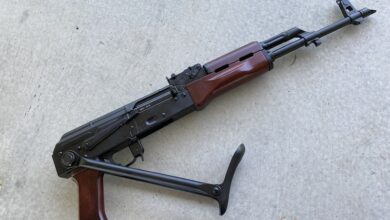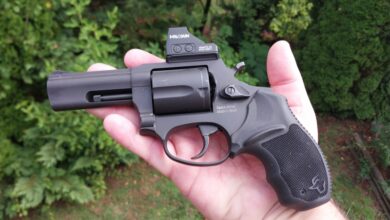Suppressors: History, Function, and Need

Guns are loud. Really loud. There is a reason why hearing protection is considered a mandatory piece of personal protective equipment at the gun range. The effects of burning gas and a micro explosion create an extremely loud noise, and that’s just the nature of the best until we discover how to turn hot light into lethal lasers. Of course, the advent of silencers or suppressors has been an attempt to tame that noise and to quiet that riot.
History of Silencers
Hiram Percy Maxim, son of Maxim gun creator Hiram Stevens Maxim, is widely credited with creating the first successful suppressor design. There were a few technical patents granted in Switzerland, but those seemingly never got off the ground. Maxim Sr. had become hard of hearing due to so much time spent showing off his Maxim gun.
His father’s lack of hearing must have been an inspiration in designing the first suppressor or silencer, or can, or whatever term you want to call it. He created the first device in 1902 and was granted a patent in 1909. It bears mentioning that he called it the Maxim Silencer, and that was the term that began to enter modern parlance more or less.
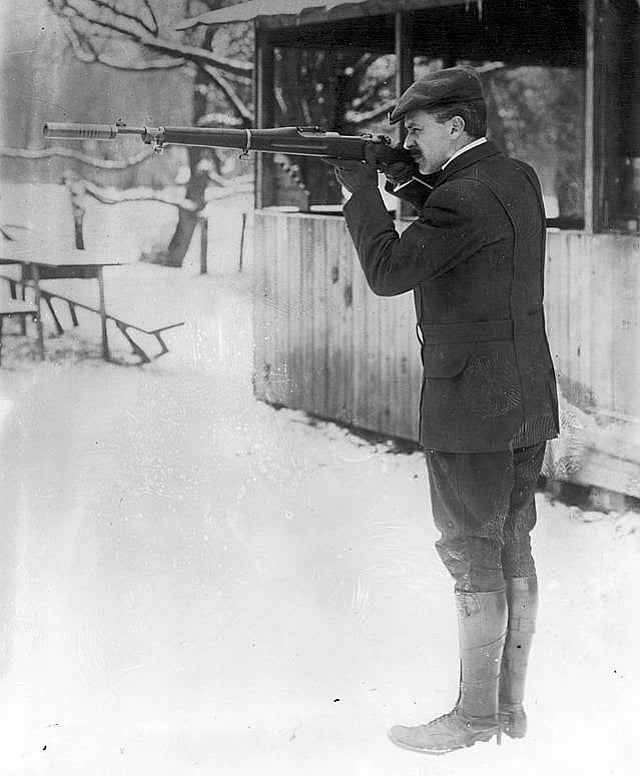
The original silencers were sold in sporting goods magazines and attracted the attention of many sportsmen and shooting enthusiasts. Theodore Roosevelt was known for owning several Maxim suppressors, including a custom model on his ‘Big Medicine’ Winchester rifle. Curiously, Hiram Percey Maxim also designed the muffler for vehicles.
Maxim Jr. worked on the products in tandem and used similar designs and technology to produce both devices. In quite a few European countries, the term “muffler” is often used to describe silencers.
The Persecution of a Safety Device
Suppressors gained slow growth up until 1934 due to the NFA. The National Firearms Act locked suppressors behind the requirements of a $200 tax stamp designed to price most people out of the ability to purchase a tax stamp and, therefore, own a suppressor, machine gun, short-barreled rifle, or shotgun.
Ultimately, I don’t think any weapon should be locked behind the NFA, but suppressors seem to be the most obnoxious devices prohibited by such a law.
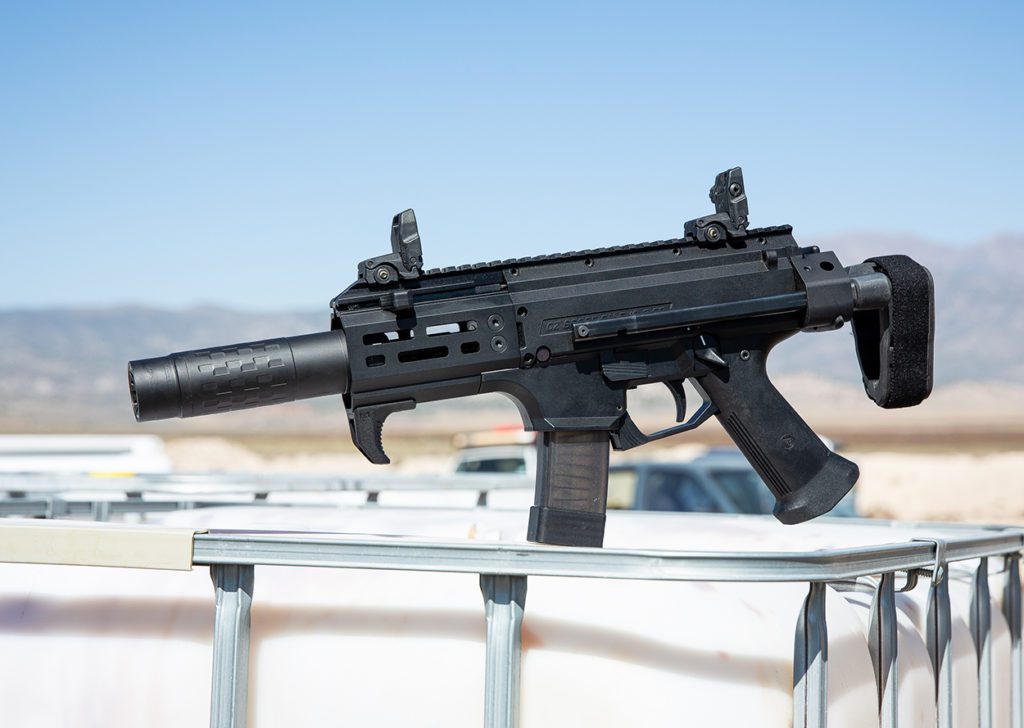
While civilian sales of suppressors tapered off after the NFA, the military adopted and used suppressors in limited numbers in World War II. Specifically, elements of the OSS and the British SOE utilized suppressors for their secretive missions.
Suppressors made a large comeback as inflation took hold, and a $200 tax stamp became a lot cheaper than it would have been in 1934. Companies like SilencerCo, Gemtech, AAC, and more popped up, producing and innovating in the suppressor world. Since then, the suppressor industry has exploded, and we’ve seen many interesting designs spring forward. In 2024, designs from Angstadat Arms, PTR, and more have pushed suppressors forward.
How Do Suppressors Work?
It’s American space magic—okay, maybe it’s not. To understand how suppressors work, we have to understand the noise firearms make and the source of that noise. The noise created by firearms has three elements.
Muzzle blast is our first example. Your primer creates the flame necessary to ignite gunpowder. Gunpowder creates gas, which propels the projectile down the barrel and eventually to your target. The high-pressure gas creates a loud boom as it escapes the barrel and expands from the muzzle.

Next, we have to contend with the sonic boom created by the projectile moving at supersonic speeds. Most suppressors cannot do anything to deal with the supersonic crack. Some can slow down the projectile, but the most common means to effectively reduce the sonic boom is subsonic ammunition.
Finally, we also have the mechanical noise of your firearm. This includes every noise the gun makes. With a semi-auto, the action “clacks” back and forth and creates a ton of noise. It’s not deafening, and most of the time goes unnoticed due to the muzzle blast and sonic boom. However, once you suppress a firearm, you’ll start to notice the noise. Some of the quietest suppressed weapons are manually operated weapons.
Inside of The Suppressor
Most suppressors use a series of baffles that separate the insides of the silencer into a series of expansion chambers. When the gun is fired, the gas pushes the projectile, and as the projectile enters the suppressor, the gas follows. The gas enters these expansion chambers, and the chambers take that rapidly expanding gas, decelerate it, and allow it to cool. It takes longer for the gas to leave the suppressor, which helps eliminate that muzzle blast.

Typically, the more chambers and baffles the silencer has, the quieter it tends to be. The downside of this is the additional length and weight required by the suppressor to house the extra baffles. Suppressor length and weight can also be determined by caliber. Unsurprisingly, it takes a much larger and heavier suppressor to quiet down a .50 BMG than a .22LR.
Silencer or Suppressor
I’ve used the terms silencer or suppressor interchangeably throughout the article, and both terms apply to the device. The patent labeled it a silencer, but some folks take issue with the term. A silencer doesn’t completely silence the gun, so they feel the term suppressor is a more accurate description of what the device does. Some folks tend to get a bit up in arms about using silencers, but most people use the terms the same way I do, interchangeably.

Other terms include the aforementioned muffler, but that tends to be a term that’s mostly used outside of the states. Can is another term used because suppressors kind of look like cans. It’s a bit more of a slang term than an actual term, though.
Do You Need One?
Need is a strong word, but do suppressors offer enough benefits to justify their costs, the NFA cost, and wait time? That’s up to the individual. I love suppressors, but honestly, the paperwork hurdle and government regulation make it annoying, so I’m not buying them as often as I’d like.
A suppressor has the benefit of reducing noise. For hunters, this is a great way to preserve your hearing since wearing muffs or plugs makes it tough to hear the game moving around you. Suppressors are also fantastic for home defense. Guns are super loud inside a building, and inside the home, a suppressor can really save your hearing in a defensive situation. Cutting noise pollution is generally nice, and that’s why all our cars have mufflers in the first place.
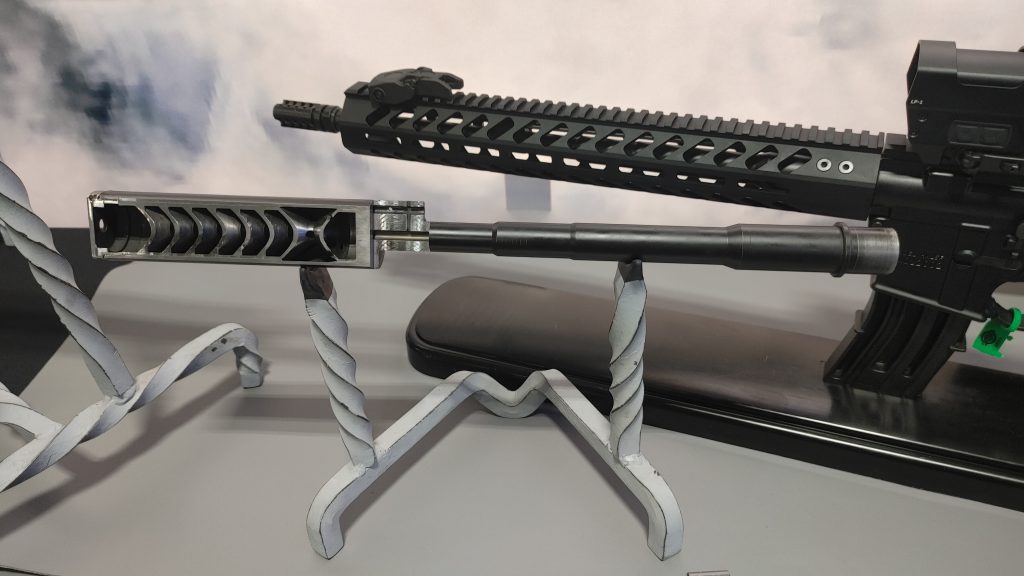
Outside of reducing noise, the suppressor also reduces recoil. It works the same as a brake and does so quite well. Suppressors also tend to do a fantastic job of reducing muzzle flash. Both are great benefits in almost all shooting scenarios.
The downsides, outside of tax stamps, are weight and length. We all love our short-barreled defensive weapons, but a suppressor adds a little extra length to your firearm. Suppressors also create blowback. This gas is thrown in your face and can be uncomfortable to a large degree. Some modern options limit blowback, like the SilecnerCo LBP and Flow-Through suppressors. Gas-busting charging handles are also nice to have to reduce this effect.
Shhhhh…
Suppressors are awesome muzzle devices that have been around for well over a century now. They are improving every year and even getting more modular, more affordable, and more accepted every day. They are safety devices subject to some silly regulation. I think it’s worth the price and hassle, but that’s an individual opinion. What do you think? Are cans for you?
The post Suppressors: History, Function, and Need appeared first on The Mag Life.
Read the full article here

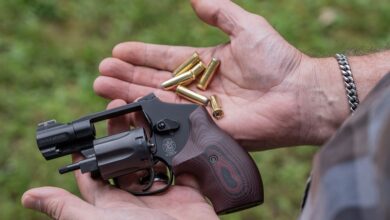
![Timney’s NEW AK Drop-In Trigger [VIDEO] Timney’s NEW AK Drop-In Trigger [VIDEO]](https://firearm-discounts.com/wp-content/uploads/2024/09/Video-Thumbnail_Timney-AK-trigger-390x220.png)
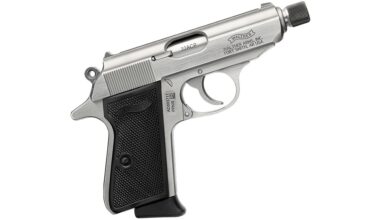
![Aero Precision NEW Tephra-22 Suppressor [First Look] Aero Precision NEW Tephra-22 Suppressor [First Look]](https://firearm-discounts.com/wp-content/uploads/2024/09/Aero-Suppressors-3-scaled-390x220.jpg)
